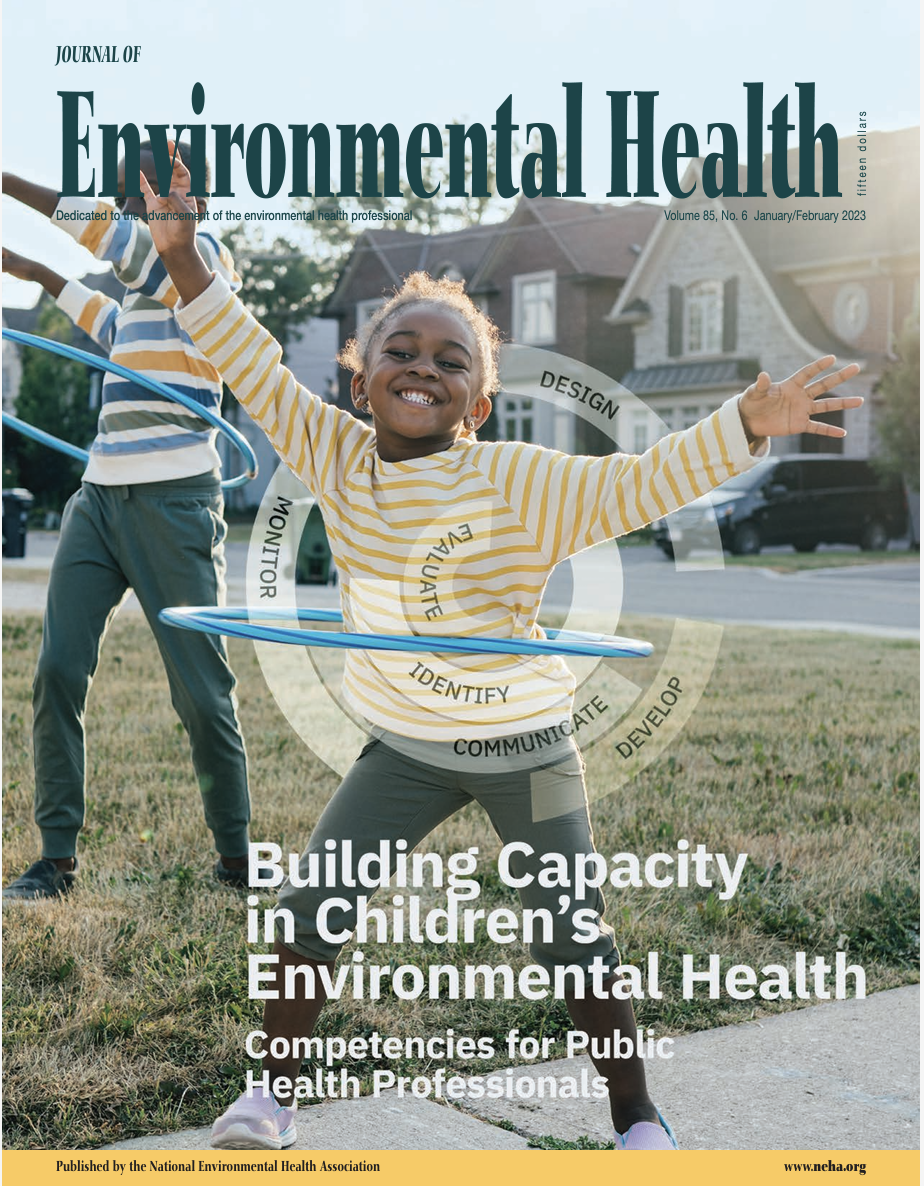Environmental factors such as climate change and toxicants in the air and water play an enormous role in childhood health. Because of the importance of these factors in children’s health, Children’s Environmental Health Day (CEH Day) on October 11th calls on the medical community, policy makers, and the general public to reflect on how policy and practice should focus on preventing adverse childhood outcomes such as cancer, autism, learning disorders, and other health conditions. Both CEH Day and a monthly themed educational webpage series are components of the Children’s Environmental Health movement, an awareness-raising, community-building, and action-driven effort.
No level of lead in drinking water is considered safe. However, the U.S. Environmental Protection Agency (EPA) has designated a regulatory action level at 15 parts per billion (ppb) of lead for municipal water systems, rather than a health-based standard. In 2015 in Flint, Michigan, 10 percent of homes tested had lead levels in drinking water greater than 27 ppb. Tap water at one house was found to have 13,000 ppb. Elevated lead levels in home water supplies have been linked to the city of Flint’s decision to switch the city water supply from Lake Huron to Flint River water, which was more acidic and corrosive. Moreover, because the city did not use anti-corrosion treatment, lead service pipes eroded and leached very high levels of lead into drinking water, causing acute and chronic lead poisoning in thousands of children. According to Dr. Marc Edwards, the Virginia Tech University environmental engineer who responded to pleas from affected parents in Flint, the EPA did not respond properly to the emergency, and the contamination might never have been brought to light if it were not for ordinary citizens and physicians who forced officials to take action. This week, the U.S. Government Accountability Office (US GAO) released a new report on lead in school water. The report notes that almost 60% of schools surveyed either had not tested for lead at the tap or did not know if they had, and nearly 40% reported lead levels exceeded EPA action levels.
Testing does not remove lead. Removing sources of lead is neither easy nor inexpensive, and there will not be an “all-clear” for years.
Though it is difficult to predict exact outcomes, children living in Flint had already complained of skin rashes, stomachaches, headaches, and learning difficulties. Elevated lead levels such as those seen in Flint also are associated with significant behavioral, developmental, and intellectual problems, along with organ damage and other health impacts. The proportion of children in Flint with high lead levels roughly doubled, and initial investigations indicate a potential link between the poisoning and fetal deaths. Flint is a low-income (45% < poverty rate), mostly black (53% African American) city, and the nation’s poorest; many consider the mishandling of the lead poisoning in Flint to be a blatant case of environmental racism.
But it’s not just Flint where children are poisoned by toxic environmental substances, and not just lead that poisons children. High levels of lead in drinking water have been found in Washington, D.C.; Durham and Greenville North Carolina; Jackson, Mississippi; and many other cities. Many other substances contaminate our water, including fracking contaminants, PFOAS, pesticides, PAHs, PCBs, and pharmaceuticals; and children of color or low-income background are often disproportionately exposed and affected by these environmental contaminants.
Fracking, or hydraulic fracturing, fractures rock and injects high-pressure fluids that force out previously unobtainable natural gas or oil. Unfortunately, the process itself has serious adverse effects on the availability and quality of drinking water, according to the EPA. The 2-14 million liters of wastewater produced by each hydraulically fractured well, contain hundreds of potential drinking water contaminants. Some of these contaminants are toxic and radioactive compounds that have been linked to health consequences, including reproductive and developmental toxicity. Nearly 18 million people in the US live within one mile of an active fracturing well, and the presence of unconventional natural gas wells has been associated with chronic upper respiratory symptoms, migraines, fatigue, and higher rates of pre-term birth. Fracking has been shown to contaminate ground water in several states.
Per- and polyfluoroalkyl substances (PFAS) are synthetic chemicals that are found in drinking water, food, products, and living organisms, as well as in groundwater, the oceans, and the Artic, according to the US ATSDR. Non-stick coatings and fire-fighting foams are among the most well-known uses of PFAS. These chemicals, which can cause cancer, birth defects, heart disease, and a weakened immune system, have been found in the blood and breast milk of virtually every American tested. These chemicals can be passed from mother to child in utero, and the official “health advisory” level of 70 ppt (EPA 2017) in drinking water may be many times higher than it should be to protect health (Walker & Andrews 2015). PFAS are not only ubiquitous; they are among the most difficult families of environmental chemicals ever to remediate (Simon 2018). A recent draft report on PFAS, which the EPA and ATSDR have been accused of suppressing, outlines how toxic these persistent chemicals are, with links to pre-eclampsia during pregnancy, liver damage, high cholesterol, thyroid disease, lowered immune system, asthma, decreased fertility, and low birth weight (ATSDR 2018).
We can no longer take clean water for granted, particularly since the Clean Water Act, which was last amended in 1972, is now under attack (Kennedy & Phillips, 2017). Because of the scale of the problem, everyone has a role to play in demanding clean water for our children — and for everyone else. Please visit the CEH Movement’s education-to-action August installment to learn more, to take action now, and to stand up for children on CEH Day on October 11th.












